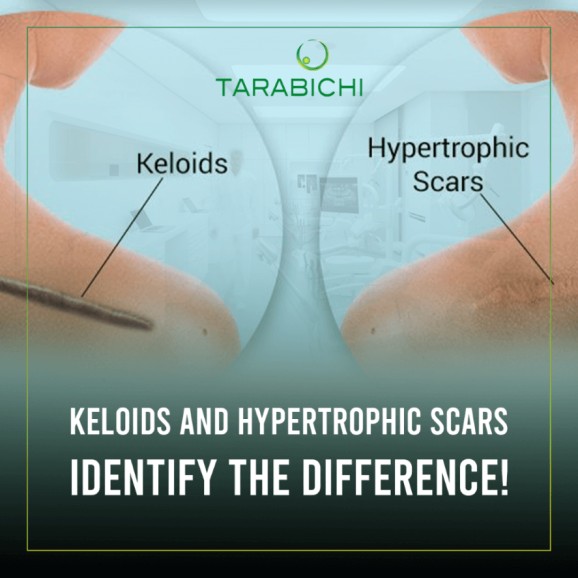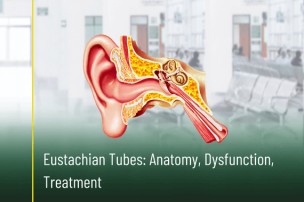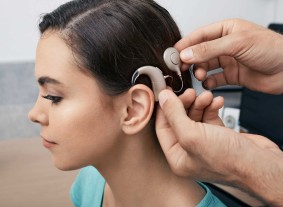keloids and hypertrophic scars | identify the difference!
Contact Us
Keloids and hypertrophic scars can be a source of frustration for many individuals, but with the right knowledge and approaches, their appearance can be effectively managed.
Whether you're seeking information for personal understanding or looking for solutions to help yourself or a loved one, this article will provide valuable insights to guide you on your journey towards healthier, smoother skin.
What are keloids and hypertrophic scars?
Keloids and hypertrophic scars are both types of abnormal scars that form as a result of an overgrowth of fibrous tissue during the wound-healing process.
Difference between keloid and hypertrophic scar
While Keloids and hypertrophic scars share similarities, there are distinct differences between the two:
Keloids:
- Keloids are raised, thickened scars that extend beyond the boundaries of the original wound, they can be firm, smooth, shiny, and are typically larger than the initial injury.
- Keloids may have a red, pink, or dark brown coloration, also can develop anywhere on the body, but commonly occur on the chest, shoulders, earlobes, and back.
Hypertrophic Scars:
- Hypertrophic scars are also raised and thickened, but they remain within the confines of the original wound.
- Unlike keloids, hypertrophic scars tend to regress over time and become flatter and less prominent.
- They commonly occur in areas with high tension, such as the chest, shoulders, and joints.
Key Differences:
- Size and Extent:
Keloids extend beyond the boundaries of the original wound and are usually larger than the initial injury, while hypertrophic scars remain within the confines of the wound. - Regressiveness:
Hypertrophic scars tend to regress and become less prominent over time, while keloids can continue to grow and may persist or recur. - Location:
Keloids can develop anywhere on the body, whereas hypertrophic scars commonly occur in areas with high tension, such as the chest, shoulders, and joints.
Also read:
- Acoustic Neuroma Surgery Cost: Understanding Treatment Options and Expenses.
- Tonsillectomy and adenoid surgery.
Keloid and hypertrophic scar symptoms
Here are some of the symptoms of keloids and hypertrophic scars:
How do you know if you have keloid in your ear?
- A raised, discolored scar that can grow beyond the boundaries of the original wound.
- Itchy, painful, and unsightly.
- Can be red, pink, or purple in color.
- Can be firm or soft to the touch.
- Can occur anywhere on the body, but are most common on the chest, shoulders, back, and earlobes.
How do you know if you have hypertrophic scars?
- Raised scar that does not typically grow beyond the boundaries of the original wound.
- Less likely to be itchy or painful than keloids.
- Can be red, pink, or purple in color.
- Also can be firm or soft to the touch.
- Can occur anywhere on the body, but are most common on the chest, shoulders, back, and earlobes, but it occurs mostly in sensitive areas.
How can Keloid and hypertrophic scar diagnosed?
Keloids and hypertrophic scars are often diagnosed based on their appearance, but in a more professional way, the doctor may order a biopsy to confirm the diagnosis of a keloid or hypertrophic scar.
A biopsy is a procedure in which a small sample of tissue is taken from the scar and examined under a microscope, to rule out other conditions that can cause raised scars, such as skin cancer.
Here are some of the things that a doctor will look for when diagnosing a keloid or hypertrophic scar:
- The size and shape of the scar.
- The color of the scar.
- The texture of the scar.
- The location of the scar.
- The patient's medical history.
Assessment of hypertrophic scar
Hypertrophic scars can fade over time, but they may leave a permanent mark on the skin, so the assessment of hypertrophic scars is important to determine the best treatment options, and the following factors are typically assessed:
- Hypertrophic scars can vary in size and shape, they can be small and raised, or they can be large and extend beyond the boundaries of the original wound.
- Hypertrophic scars can be red, pink, or purple in color, they may also be darker than the surrounding skin.
- Hypertrophic scars can be firm or soft to the touch, and also bumpy or smooth.
- They can occur anywhere on the body, but they are most common on the chest, shoulders, back, and earlobes.
- Hypertrophic scars can be itchy or painful, but unlike the keloids, this is not always the case.
- They typically start to form within a few weeks of the injury and may continue to grow for several months, but they will eventually stop growing.
Finally, if you suffer from any of the above symptoms, you can now request an appointment to get in touch with our ENT Specialists.
You can also view:
- The Dangers of Using Q-Tips for Your Eardrum.
- Deviated Septum: What is it, Symptoms, Causes and Treatments.
If you are looking for the Best ENT Doctor in Dubai or the Best ENT Specialist in Dubai, please reach out to us on the below details, our team comprises of only the best ent doctors in UAE and the region.




